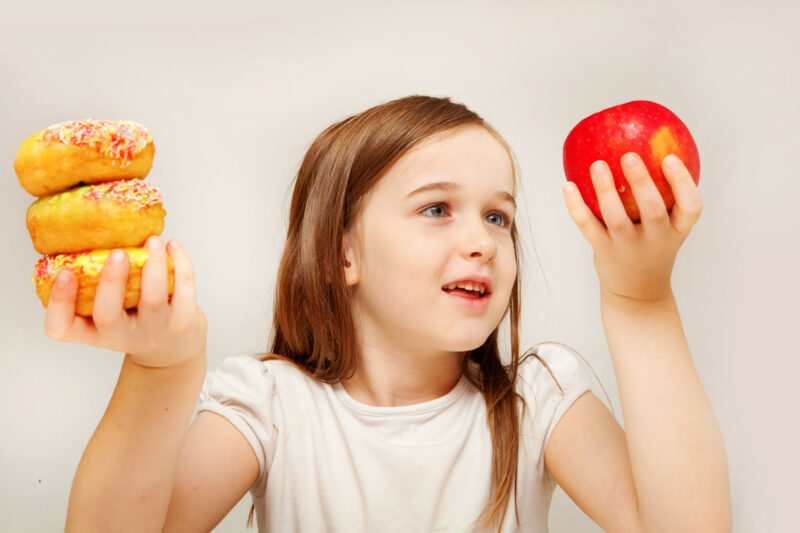Enjoy the foods you love AND be healthy: Mindful eating
“Food, glorious food!” wrote Lionel Bart, lyricist of this song from Oliver, the British musical based on the Charles Dickens’ novel, Oliver Twist. Mr. Bart knew what he was talking about.
Think of your favorite comfort food, snack, or sweet treat. What kinds of feelings arise when you think of your favorite dish? Are there feelings of comfort or safety? Maybe feelings of satisfaction or nostalgia? There are many emotions that present themselves when we eat. There may even be feelings of shame or defeat that can manifest as we eat the last chip from a newly opened family-sized bag that we finished in one sitting.
What does all this mean? It means our emotions play an important role as we eat—whether we like it or not. From emotions of guilt when we cheated on our diet (again) to that first satisfying and indulgent bite of our favorite pasta or donut, we can pay attention to our emotions to better understand how we feel, think, and believe about what we eat. With this understanding of ourselves, we can start being mindful of what our body needs without sacrificing the foods we love.
What we’re told about what to eat
We’ve all heard it before. Carbs are bad for you. Sugar is bad for you. Wheat is bad for you. Grains are bad for you. Meat is bad for you. Processed foods are bad for you. Eggs are bad for you. Dairy is bad for you. Non-organic foods are bad for you. Too much fruit is bad for you. Certain vegetables are bad for you.
If all these things are true, what’s left to eat? If we believed that all the above were true, then to stay healthy, we all need to start on a diet of eating plain kale…but not too much, of course. How does it make sense for all these things to be bad for our health?
We see in the media how different research studies on the same topic draw entirely different conclusions. One day eggs are bad for you and increase cardiac disease, and the next day, eggs aren’t so bad for you because they contain a different type of cholesterol that isn’t bad for you.
If the science on food is so contradictory, why do we constantly make decisions to change what we eat based off them?
The body knows
This may come as a surprise, but the body actually knows which foods it needs and how much it needs. Babies know how much milk they need to feel content and stop eating when their hunger is satisfied. So, what happens to us that we lose this ability to know what we need and when we’ve had enough? We start learning to go against our body’s intuition in being told to finish our plate, told to only eat certain foods, or being shamed by parents or caregivers.
When a child is told to finish all their food because there are starving children in other countries, the shame the child experiences from their caregiver can push the decision to eat past the full point and ignore the body’s indicator of being satisfied. For this person, eating may now be associated with shame. So how does someone who’s been taught to ignore their body’s natural signals of hunger and being full start to recognize these signals again?
Mindful eating
Remember the above example of eating a family-sized bag of chips in one sitting?
Think about your favorite snack that you usually power through. Think of where you are as you are wolfing down this favorite snack. Now, consider if you took a bite every 15 seconds or so. Imagine how much slower you would eat. Then, notice what the texture of your snack is like. Is it light and crisp as you take a bite? Is it soft and chewy? Notice the flavor. Is it salty? Is it sweet? Is it salty, then sweet? As you’re continuing to take slow bites, bring awareness of where you usually feel hunger in your stomach. Notice how hunger pangs fade and fullness starts to set in.
This is mindful eating. Many of us eat in front of our tv, computer, smartphone, or even while driving. We shovel food into our mouths while binge-watching, playing a game, or working. Our minds aren’t on what we’re eating. Our minds are on our screens. We’re practicing mindless eating. Mindful eating challenges us to stop multi-tasking and solely focus on what we’re eating while noticing the entire experience of enjoying a meal or snack. This can be challenging, but a way to start is to practice slowing down when we eat.
Enjoy!
The main purpose of mindful eating is to bring us back to paying attention to our body, knowing what we need or don’t need. When we start to practice paying attention to our bodies and our experience of eating, we may not feel the need to power through that family size bag chips. Rather, we can take a handful out of the bag and practice eating them mindfully one by one. Another purpose of mindful eating is to enjoy what we eat and the experience of eating. If we take time to pay attention to eating an apple with curiosity and wonder, imagine the world of flavor that awaits! Food is glorious and meant to be enjoyed for its taste and for our health. Imagine the world that awaits when we stop listening to other people about what to eat and start listening to our own bodies. Bon Appetit!
For more in-depth information about mindful eating and food and health, please refer to the below resources:
Curated articles on Mindful Eating on Scoopit!
Mindful Eating by Jan Chozen Bays
How to talk to your children about food in a healthy manner by Kristen Fuller
Contributed by:
Lindsay Perry, M.Ed, LPC Intern #79863
Clinical Supervision by Amy Fuller, PhD, LMFT-S, LPC-S










